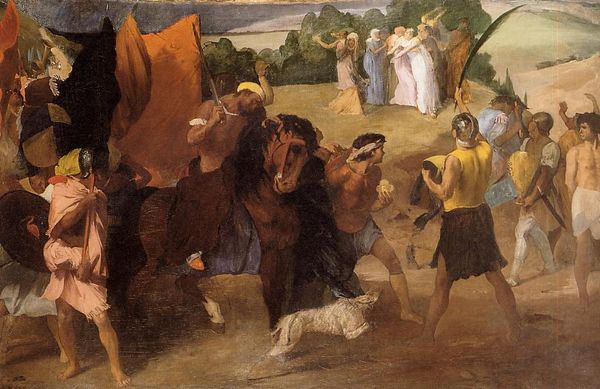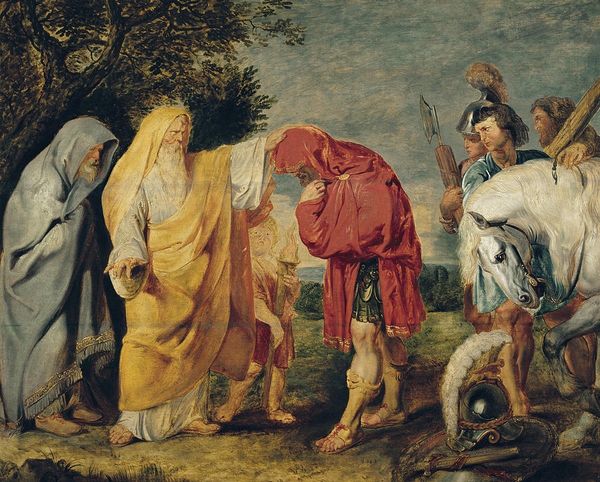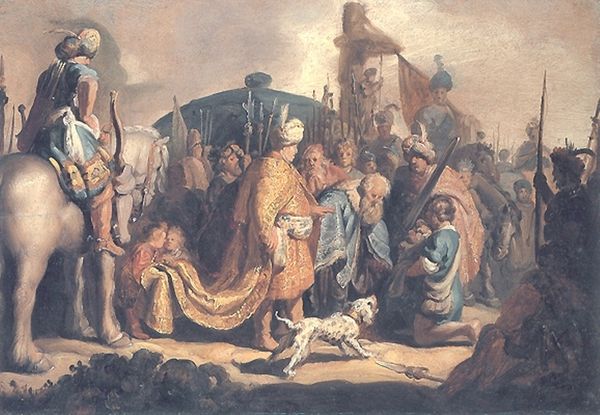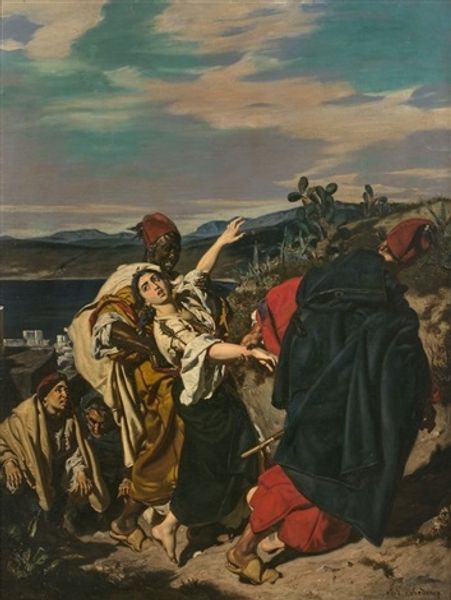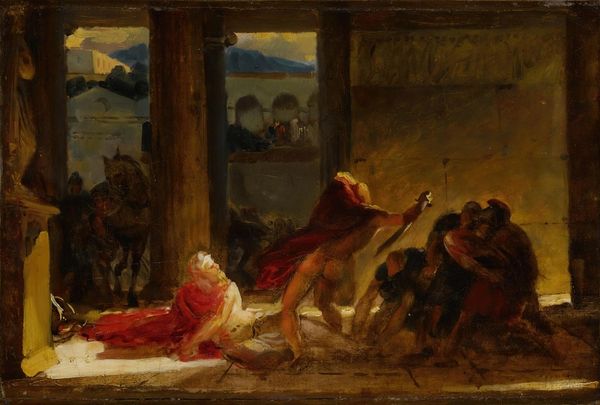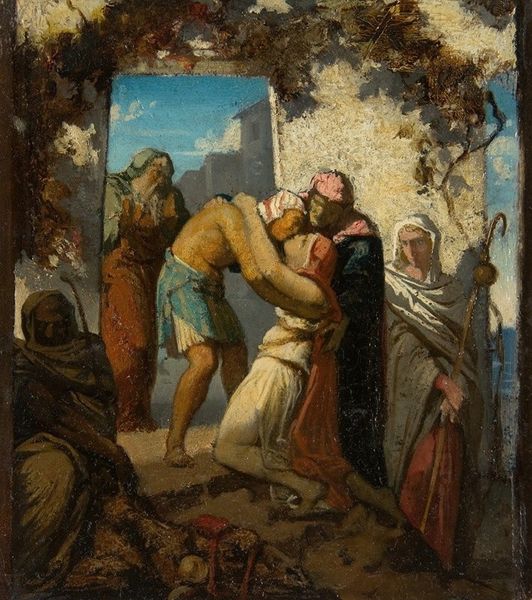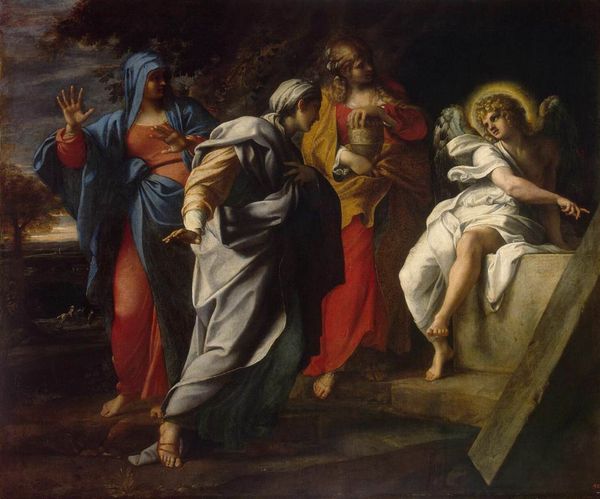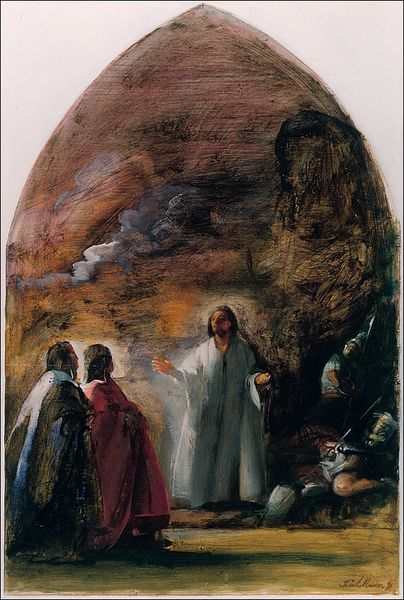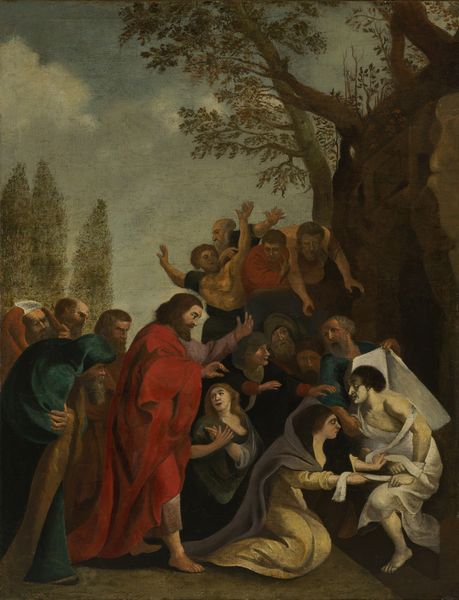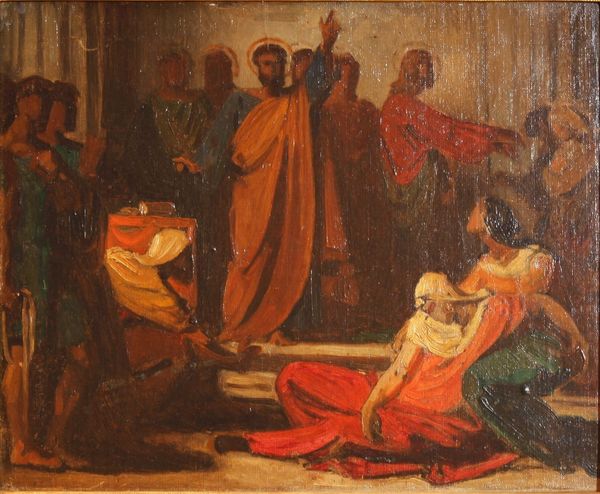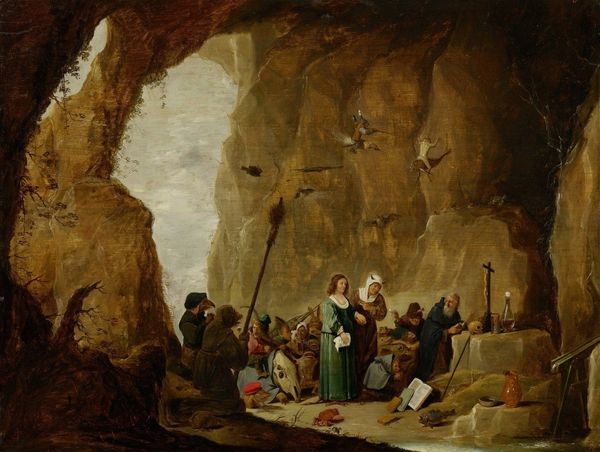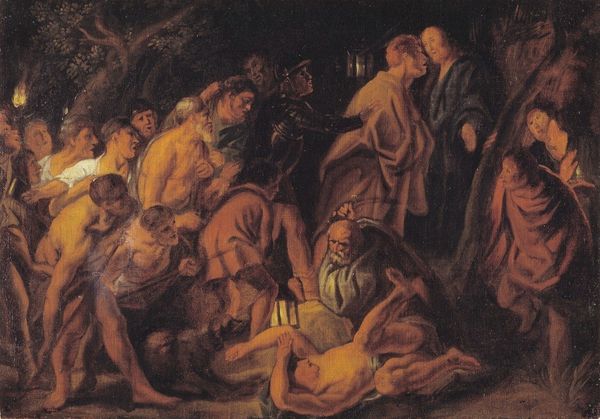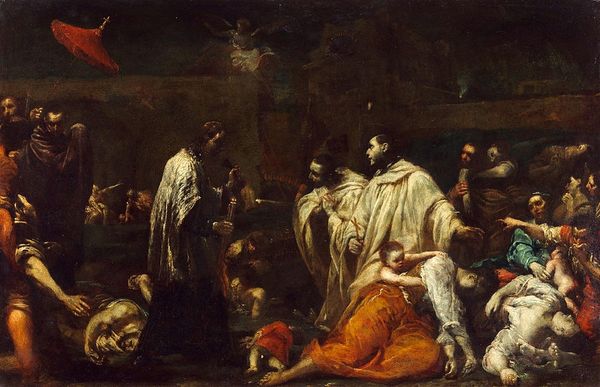
Copyright: Public Domain: Artvee
Edgar Degas created this work on paper titled "Alexander and Bucephalus" at an unknown date with pastel and brush and essence. Degas, a 19th-century French artist, often explored themes of power and control. This work depicts a pivotal moment from the life of Alexander the Great. In this scene we observe a young Alexander taming the wild horse Bucephalus, a feat that would symbolize his future leadership and imperial ambitions. The composition shows us the figures set against a classical landscape. But what does it mean to represent a historic figure, whose life is already full of myths? Degas was working in a time of great social change and questioning the status quo. In this context, a rendering of Alexander can suggest a reflection on leadership, identity, and the power dynamics between man and animal. While the scene evokes a sense of classical heroism, it also hints at the complex relationship between control and freedom. "Alexander and Bucephalus" invites us to ponder the tension between taming and liberation, domination and alliance.
Comments
No comments
Be the first to comment and join the conversation on the ultimate creative platform.
